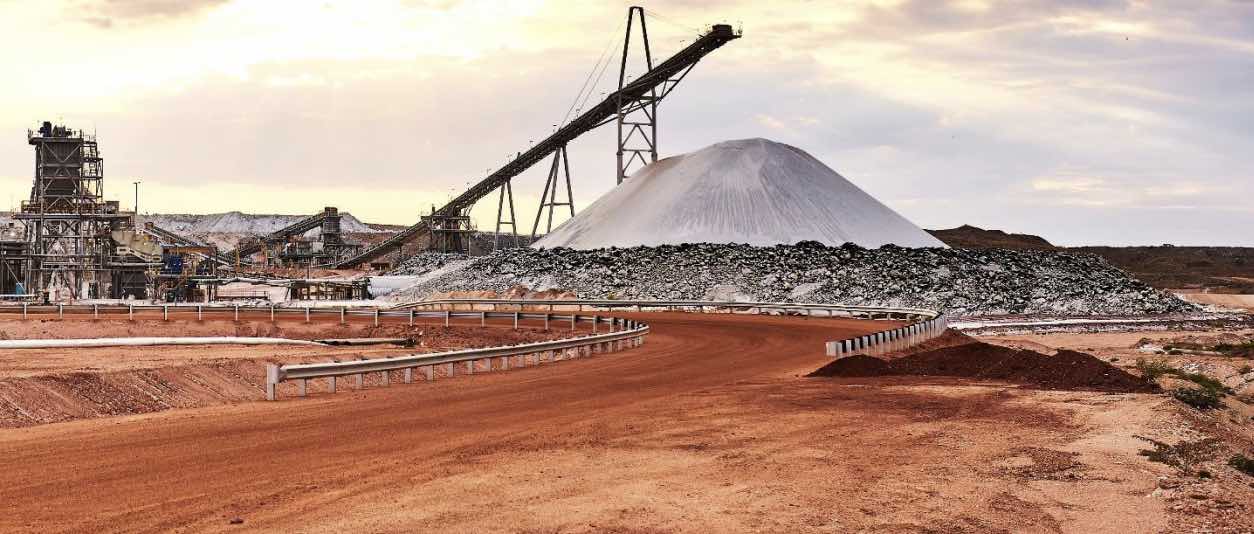
Lithium-ion batteries have increased interest in lithium mining. There has been a sharp rise in battery grade lithium production to meet the demand for electric cars. Primary and secondary rechargeable batteries have become lithium’s major area of use. In this article, Global Road Technology explores the discovery of lithium and how it occurs in nature, where lithium is mined in Australia, how it is mined, key lithium mining companies in Australia, dust generation and best practice controls.
Lithium was first identified in 1817 by the Swedish chemist Johan August Arfewdson. It was in petalite, a lithium aluminium silicate mineral. Its name comes from the Greek word lithos which means ‘stone’. There are different types of lithium which exist, and these are:
The brine deposits are recent Li-rich lacustrine evaporites. Arid to hyper-arid climates and high evaporation rates contributed to their formation. The lithium source and enrichment processes are specific to each brine. Geochemistry attributes weathering of felsic rocks and local hydrothermal activity to their formation. North America, western USA, South America, northern Argentina, northern Chile, western Bolivia and China have brine deposits. Hard-rock deposits have different lithium mineralization in magmatic or sedimentary rocks. Its related to endogenous and exogenous processes. Lithium bearing minerals include micas, pyroxenes, silicates, phosphates, clay, and borosilicate. Spodumene-bearing lithium-cesium-tantalum (LCT) pegmatities are unique to Australia.
Lithium mining in Australia produces almost half of the world’s lithium. The majority of the lithium is mined in Western Australia. The world’s largest hard rock lithium mine is in Australia. Here are the lithium mines in Australia:
Lithium mining in Australia occurs largely in the extraction and processing of hard-rock deposits of the spodumene ore. Processing the ore produces chemical or technical grade lithium concentrates. Further processing yields lithium carbonate or lithium hydroxide. Lithium uses include:
They are only a few lithium mining companies in Australia. Given the recent lithium boom in the world, there has been increased interest in lithium and here are some of the key lithium mining companies in Australia:
Lithium mining generates inhalable and respirable dust particles. Transportation, stockpiling, grinding, and ore processing which involves crushing and screening generate dust. Effective dust control management plans focus on the elimination of dust at its source. Dust generated during crushing and screening exposes lithium mine workers to silica. Inhaled silica can settle in the alveolar region of the lungs. This triggers conditions such as silicosis and lung cancer in the long term. The onus lies on the mining company to extend its duty of care. It is important to factor in dust suppression measures that have a no-compromise approach to air quality. Stockpile dust control at the port ensures non-exposure of nearby water bodies to the lithium dust which might end up disturbing the marine ecosystem. Haul mine roads are the backbone of daily mining operations and haul road dust suppression is critical for service delivery to meet business targets related to operational objectives of lithium mines in Australia.
Global Road Technology offers expertise in dust suppression at the source. With products and systems that can be readily implemented in mining activities and into workplace health and safety measures that fulfil the objectives of the overall site management plan.
Your feedback is important to us. If you enjoyed reading this Global Road Technology industry update and found it informative, please let us know by leaving a REVIEW.
REFERENCES
Are environmental regulations, health and safety concerns or potential profit loss a concern right now?
Contact Us Now